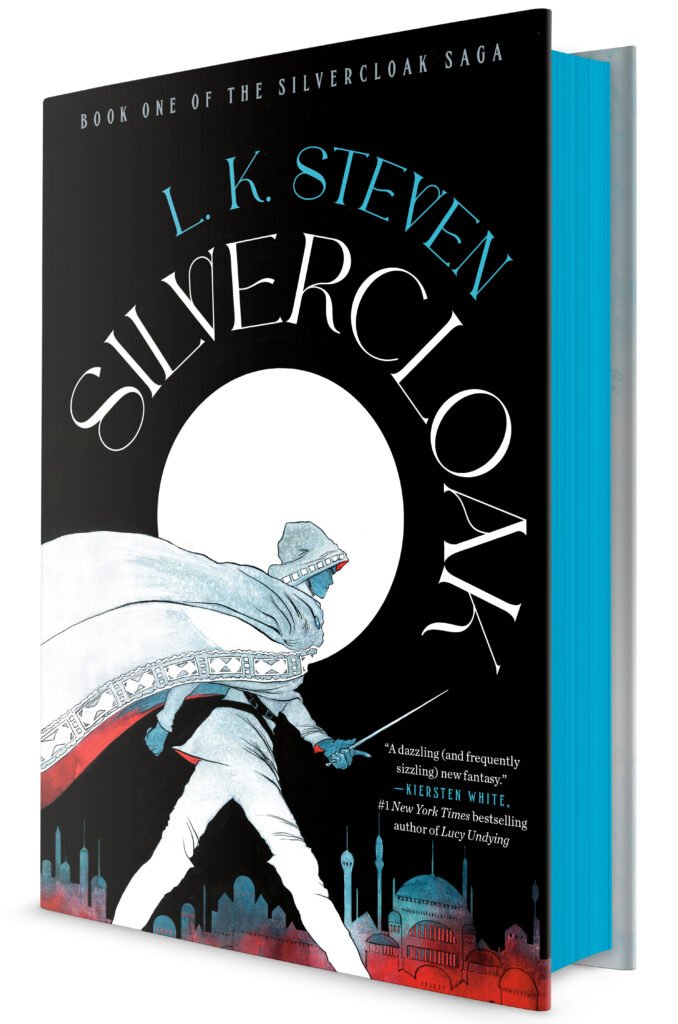Silvercloak (Silvercloak Saga, #1) by L. K. Steven: A Spellbinding Yet Flawed Adventure
When I first picked up Silvercloak, the debut novel in L. K. Steven’s new saga, I was intrigued by the promise of magic intertwined with the complexities of human emotion. What I didn’t expect was how this book would turn my assumptions upside down. I received an advance copy for free and am sharing my thoughts voluntarily, and I am excited to unpack both the strengths and weaknesses of this captivating story.
From page one, Silvercloak conjured familiar echoes of Harry Potter, a comparison that can be both a blessing and a curse. However, Steven crafts a unique narrative canvas where magic intersects with the human experience in a startling manner. The notion that magic fuels itself through either pleasure or pain adds a poignant layer to the story, propelling characters into tumultuous emotional landscapes. Some moments are gut-wrenching yet relatable, beautifully exploring the gray areas of suffering and joy. It’s refreshing to see well-developed characters who feel authentic as we witness their struggles with both pain and pleasure.
One standout feature of the story is its pacing. Each section felt like a carefully plotted adventure, with thrilling twists and turns that kept me hooked. Steven divides the narrative into five parts, a decision that grants the reader ample opportunity to pause and digest the unfolding drama without feeling rushed. The undercover nature of our protagonist creates a tense atmosphere, creating stakes that kept me engaged throughout.
The romance—often a point of skepticism for me—was surprisingly effective here. Initially wary of the enemy-to-lovers trope, I found genuine depth in how the characters’ animosity transformed into something more. Their relationship reveals layers of complexity rather than merely serving as an easy narrative device. I appreciated that their hate was steeped in historical context, which made the eventual shift to love feel earned.
However, I did have some grievances. While the protagonist Saffron shows self-awareness regarding her flawed decisions, her bouts of self-loathing became a little tiresome. Some moments depicted her blaming herself for events outside her control, which felt undeserving and occasionally detracted from her character’s growth. I found the romantic scenes bordering on uncomfortable, with one instance of sexual intercourse feeling particularly unnecessary.
Foreshadowing in the plot became both a strength and a weakness; while it didn’t dampen my enjoyment, I did find that I often saw plot twists coming. For some, this might diminish the surprise, but for others, it can add an enjoyable layer of tension as you find yourself racing to see if your guesses are correct.
In conclusion, I rate Silvercloak ⭐⭐⭐ out of 5. Despite some hiccups—an overpowering character and moments that risked unnecessary discomfort—it carries enough intrigue and emotional depth to warrant a read. This tale may resonate particularly well with fans of character-driven fantasy and those who appreciate nuanced emotional journeys over traditional tropes. I left the book eager to see how the story unfolds in future installments, convinced there’s potential for something truly special.
In a marketplace saturated with fantasy novels, L. K. Steven’s Silvercloak is one that stands out, if only to remind us that magic, like all things, comes with its own set of complexities. I’m looking forward to what lies ahead in this captivating saga!
Discover more about Silvercloak (Silvercloak Saga, #1) on GoodReads >>







